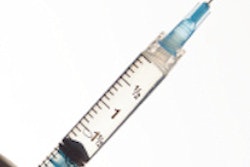Articaine had more than nine times the anesthetic success than lidocaine for dental anesthesia in a 10-study meta-analysis presented by University of Iowa researchers at the recent International Association for Dental Research (IADR) meeting in Toronto. However, significant differences between the studies cast doubt on the meaning of this result, according to another expert who attended the presentation.
Headed by Kellie Paxton, D.M.D., M.S., the research team searched PubMed (using Medical Subject Headings database search terms) for studies examining the anesthetic efficacy of initial administration of articaine/carticaine and lidocaine in dental applications. The team identified 77 studies but discarded 67 because they had "significant shortcomings," such as not being randomized or not having clearly reported outcomes.
The remaining 10 studies were performed in five different countries and were published between 1991 and 2007. They each used either articaine or lidocaine in a 4% solution 1:100,000 with epinephrine.
The team first summarized the key points in each of the studies with five-page abstraction forms, and an independent evaluator arbitrated disagreements about how to abstract the information. The primary focus was on the proportion of anesthesia administrations achieving pulpal anesthetic success, as measured by an electric pulp test and/or a visual analog scale for intraoperative pain. Secondary analyses were intended to evaluate the length of pulpal anesthesia.
However, a generalized lack of standardization and data made it impossible for the team to perform the secondary analyses, Dr. Paxton said. Two types of randomization were used in the 10 studies: a crossover design in which subjects used one type of treatment followed by the other, and independent sampling in which they were assigned to only one treatment.
"Because two forms of randomization were used in the studies we were analyzing, much heterogeneity was introduced into the meta-analysis," Dr. Paxton noted. "This is because estimation of the treatment effect is dictated by the study's design type."
Individually, two of the 10 studies reported a significantly superior performance of articaine hydrochloride compared to lidocaine hydrochloride, and a third study showed a trend toward such superiority. In four other studies, the observed rate of anesthetic success was greater for articaine but was not statistically significant. The three remaining studies each showed the two agents had similar anesthetic success.
The team then combined the data from the 10 studies and examined them with Fisher's method of combination of probabilities. They found articaine produced statistically significantly more anesthetic success than lidocaine. They also examined the combined data with a random effects model and found that articaine is associated with 9.21 times more anesthetic success than lidocaine (95% confidence interval 2.56-15.85).
However, when the team examined the differences between each of the 10 studies with respect to how the studies were conducted and how the results were reported, they found significant heterogeneity.
The chair of the IADR session, Zakaria Messieha, D.D.S., affirmed these results. "There is too much heterogeneity between the articaine and lidocaine studies to make this meta-analysis conclusive," said Dr. Messieha, an associate professor of clinical anesthesia at the University of Illinois at Chicago and a dental anesthesiologist in private practice in Glen Ellyn, IL.



















